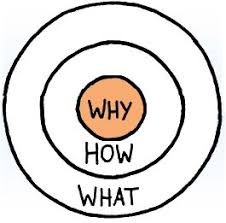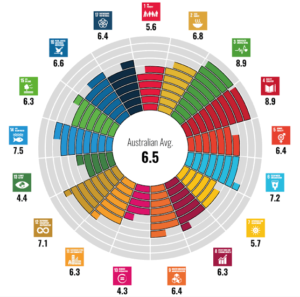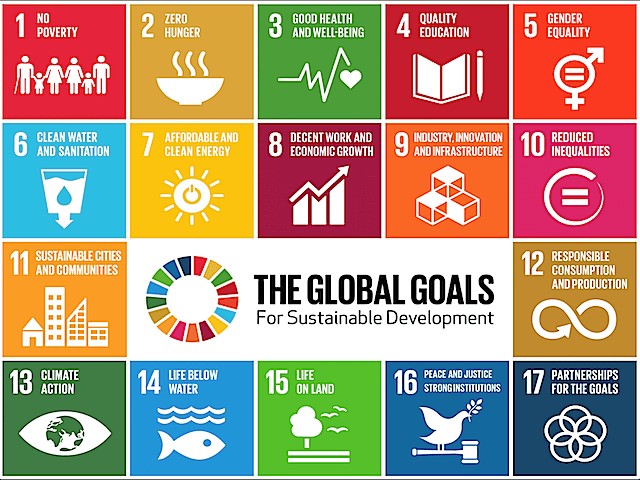In part 4 of this series, Bridget Gardner explains why the UN’s Global Goals for Sustainable Development, developed back in 2015, are one of the five hottest sustainability trends for the Australasian cleaning industry in 2019.
The Sustainable Development Goals (SDGs)
The 17 Sustainable Development Goals (SDGs) were developed by the UN General Assembly to measure progress on economic, social and environmental performance. They are a “universal call to action to end poverty, protect the planet and ensure that all people enjoy peace and prosperity“.
Although initiated in 2015, the SDG reporting framework was only adopted in mid-2017. As signatories to the SDG, the Australian and New Zealand Governments launched their first Voluntary National Reviews (VNR) of their efforts to meet the SDGs in July 2018 and 2019. And they have already motivated government policy.
For example, in January of this year, the Australian Modern Slavery Act 2018 was enacted and the Indigenous Procurement Policy (IPP) was strengthened. Implementation of both these strategies are being measured and reported under SDG 16 (Peace, Justice and Strong Institutions) and SDG 8 (Decent Work and Economic Growth) respectively. We are also seeing stricter supply-chain reporting requirements in government and corporate tenders as a flow-on effect.

Start with ‘why’
Another reason the SDG framework represents a hot trend for 2019, is because it shifts our focus away from prescriptive criteria and regulations, and onto the health and environmental issues behind the 17 goals. And while this might not sound radical, it reflects a fundamental change in the expectations of the public, from both governments and business. People want real action, not a tick box of credentials.
There is a very famous Ted-talk by marketing guru Simon Sinek, called “start with why”. In it he flips the standard way of messaging on its head by explaining that if we promote our ‘WHY’ – our passion and motivation for doing what we do – our product or service will be sold even before we explain ‘HOW’ it delivers on it. That is because humans make decisions with our emotional, not our rational brain.
Green marketing and sustainability reporting is no different. Each category of the building rating systems Green Star, NABERs and WELL, focus on a specific health or environmental problem that the relevant criteria aims to address.
Yet that is not what the cleaning industry does. Suppliers proudly promote their ‘HOW’ with terms like: ‘Recycled’, ‘Biodegradable’, ‘Sustainable palm-oil’ and ‘Chemical-free’. Services use statements such as: “We use certified products and environmentally responsible practices”. While this may well be correct, it expects your customers to join the dots from ‘HOW’ to ‘WHY’ for you. Are you passionate about clean and healthy oceans? Excellent. This is SDG 14 (Life below water).
Tell us about the problem and why you care about it. Then tell us what your product/service is doing to help, and what difference you are making. But make sure you back it up with evidence, because your customer does not need any more spin. Which brings us to two more critical requirements of the SDG indicator framework – accountability and reporting.

Measurable reporting
Transparent and accurate reporting is a key requirement for signatories to the SDGs. The SDG framework consists of 17 goals, 169 targets and 232 SDG rating indicators against which countries are measured. Each country’s sustainable development results are reported on Government websites and ranked internationally by the Sustainable Development Solutions Network (SDSN) .
Unfortunately, Australia currently ranks 38th out of 162, which is among the worst across OECD countries and only one place ahead of China. In contrast, New Zealand ranks 11th. Perhaps unsurprisingly, Australia obtains its worst results on SDG 12 (Responsible Consumption and Production) and SDG 13 (Climate Action).
Any organisation or company can use the same framework to set their own sustainability goals and accurately measure and report on the outcomes. To date, more than 10,000 companies around the world have pledged to support the SDGs in some way. You can even submit a case study and report your results on the Sustainable Development Goals website.
But if a rich country like Australia can’t meet all 17 goals, how is it even possible for a small company? It’s not – but that’s OK. The SDGs are a road map with multiple options to guide change and inspire innovation, not a set of rules to stifle it.

Choose your cause
For over 15 years of training Fresh Green Clean’s programs, I have always tried to link the ‘why’ with the ‘what’ – the health and environmental risks with the solutions. However, there are as many ‘green’ solutions as there are risks – a cause of constant frustration for managers who want silver-bullet answers. “Just tell me what to do” they say. “What are rules? You’re over-complicating it”. And yet, sustainability IS complicated. There are seventeen SDGs, not three.
The answer is to choose a handful of health and environmental issues that are relevant to your operations; areas where you know you can make a difference; causes that you, your staff and your customers care deeply about. Focus on your corner and do it well. Research it, understand it and how to fix it. Invest in training and expert advisors to help you. Explore the SDG case studies to see how other organisations have addressed the same issues, such as Green Star or Unilever. Then implement solutions, set targets, measure the outcomes, and report the results using clear and defendable statistics.
Many SDGs overlap, so the work you do in one area can support another SDG or area of your business, or network. The Australian Report on the Implementation of the Sustainable Development Goals, 2018 states: “The strength of the SDG framework lies in the interlinkages between the SDGs… recognise the interconnections and trade-offs within systems and seek to address challenges within a holistic approach.” The Sustainable Development Goals are the UN’s blueprint for achieving a happier and healthier world by 2030. And they are proactive and pro-business, because they recognise that prosperity is a key enabler for nations and companies to address our pressing health and sustainability problems.
This article was first published in Inclean Magazine, September 2019

